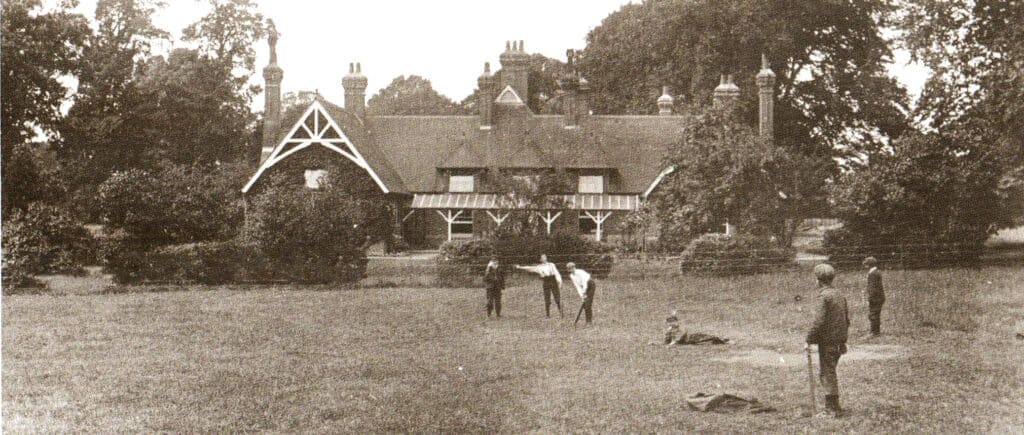In this month’s Then and Now, Roger Guttridge finds the cottage origins still within Blandford’s hospital and discovers the very first patients

Working out exactly what’s what in these ancient and modern pictures of Blandford Hospital takes a bit of doing, so much has changed in 130 years or so.
The hospital’s history dates back to 1883, when the Hon Miss Portman paid for the construction of a cottage hospital adjoining the Corner Coffee House near the junction of Salisbury Street and Whitecliff Mill Street.
The first patient was reputedly a man injured in a wagon accident at Tarrant Hinton in March 1883.
It became known as the Nurse House, but only catered for out-patients; the more seriously ill or injured being sent to bigger hospitals at Dorchester, Weymouth, Bournemouth or Bath.
The Portmans of Bryanston House then financed the present hospital, which was officially opened on the 15th December, 1888.
‘This hospital,’ declared Viscountess Portman and the Hon L E Portman, ‘is principally intended for the necessitous poor of Blandford and those parishes in the neighbourhood which have no institution of the kind within easy reach of them. Such patients are admitted free of charge.’
In her diary, Julietta Forrester, wife of Lord Portman’s agent, noted that one of the first patients was a Iwerne Minster woman whose incapacity occurred in ‘rather laughable circumstances.’
In his will, the squire of Iwerne, Lord Wolverton, left instructions for everyone in his service to receive a year’s wages.
Julietta believed this sweeping bequest was a ‘clerical error’ by Lord Wolverton’s legal people, which cost his estate the then princely sum of £8,000.
Apparently one of the servants ‘spent and drank’ some of her money, went upstairs to bed but then decided she needed another drop.
‘She stumbled, and, falling from the top of the stairs to the bottom, broke her leg,’ says Julietta.
The mishap earned the sozzled servant the dubious honour of being one of the first two patients at the new Blandford Cottage Hospital.
The other ‘first patient’ was a man: complaint unknown.
The Portmans continued to pay the wages of the matron and nurses for many years.
No longer a cottage
The late Victorian photos are taken from somewhere close to the junction of Whitecliff Mill Street, Milldown Road and Park Road and show the original Cottage Hospital when it really was a cottage of sorts.
The location was known as Picket Close and the impromptu cricket match in the foreground is being played on what is now the home of Blandford Bowling Club. Fortuitously, the club was in full match mode when I arrived to take the ‘now’ picture (above)!
The building in the background of the bowls match is one of many modern extensions that have seen the present-day Community Hospital grow to many times its original size. However you can just make out one of the original gables peeping above the roof line.
The other Victorian picture (above) shows a rural-looking Milldown Road stretching away into the distance while the sweep into Park Road appears to follow a different line much closer to the original hospital than the present road – or perhaps there’s a foreshortening effect in the old photo?
The aerial shot below shows how the original building is still there, but has been entirely consumed on all sides by later extensions, with just one gable and two chimneys showing where it still sits.